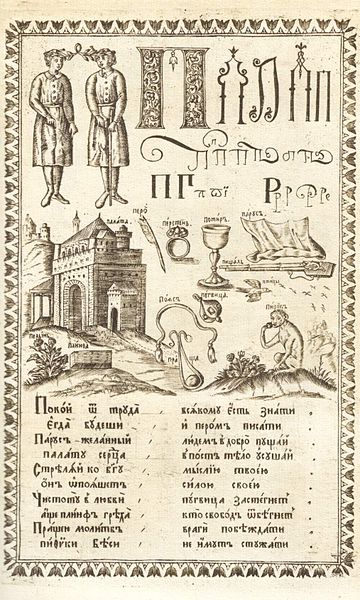The Novgorod Republic was a medieval state that existed from the 12th to 15th centuries in northern Russia, stretching from the Gulf of Finland in the west to the northern Ural Mountains in the east. Its capital was the city of Novgorod. The republic prospered as the easternmost trading post of the Hanseatic League, and its people were much influenced by the culture of the Byzantines, with the Novgorod school of icon painting producing many fine works.
Medieval walls of the Novgorod Detinets from the late 15th century. The Kokui tower (left) dates from the 17th century; its name is of Swedish origin.
Martha the Mayoress at the Destruction of the Novgorod Veche, painting by Klavdiy Lebedev (1889)
The removal of the veche bell from Novgorod, miniature from the Illustrated Chronicle of Ivan the Terrible (16th century)
A fragment of the icon Praying Novgorodians depicting the Kuzmin boyars (1467)
Russian is an East Slavic language, spoken primarily in Russia. It is the native language of the Russians and belongs to the Indo-European language family. It is one of four living East Slavic languages, and is also a part of the larger Balto-Slavic languages. It was the de facto and de jure official language of the former Soviet Union. Russian has remained an official language in independent Russia, Belarus, Kazakhstan, Kyrgyzstan, and Tajikistan, and is still commonly used as a lingua franca in Ukraine, Moldova, the Caucasus, Central Asia, and to a lesser extent in the Baltic states and Israel.
This page from an "ABC" book printed in Moscow in 1694 shows the letter П.
The Ostromir Gospels of 1056 is the second oldest East Slavic book known, one of many medieval illuminated manuscripts preserved in the Russian National Library.






